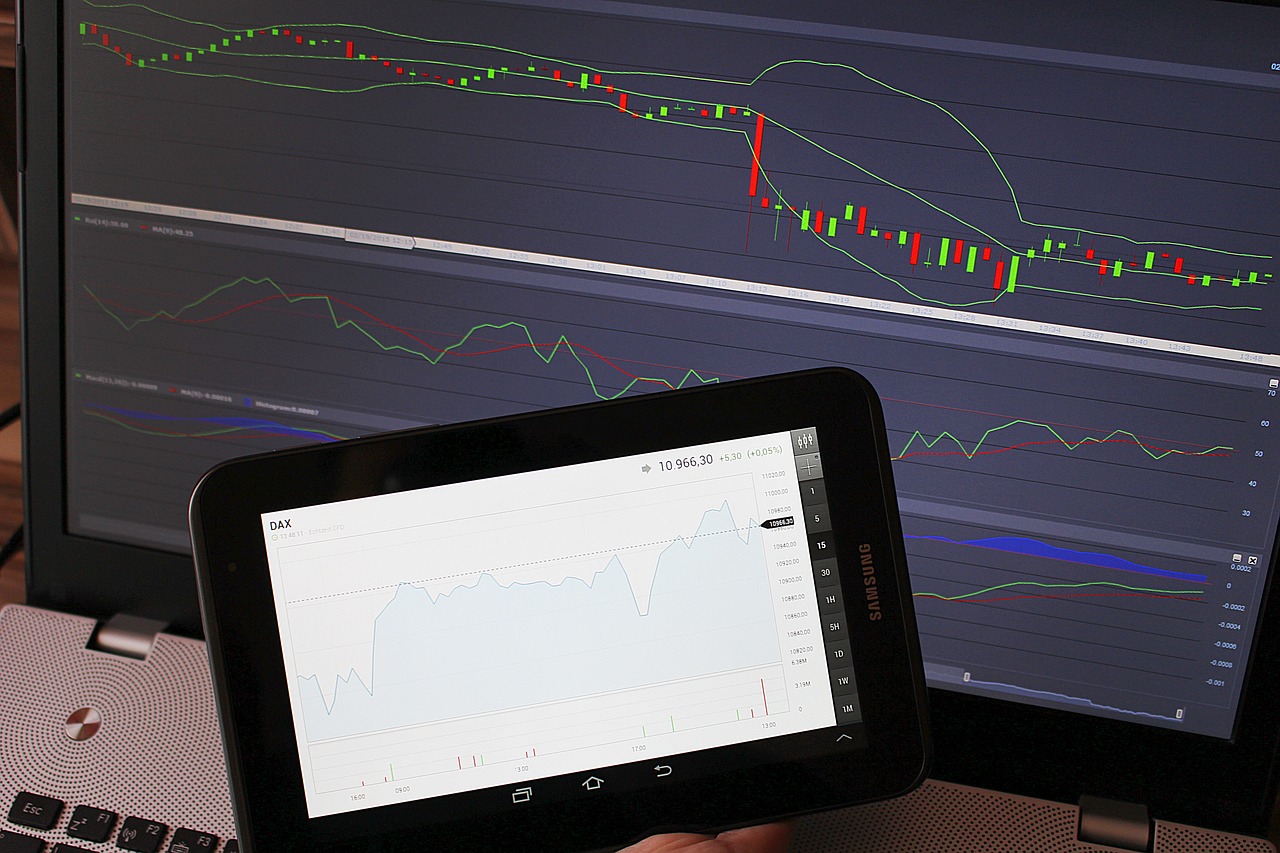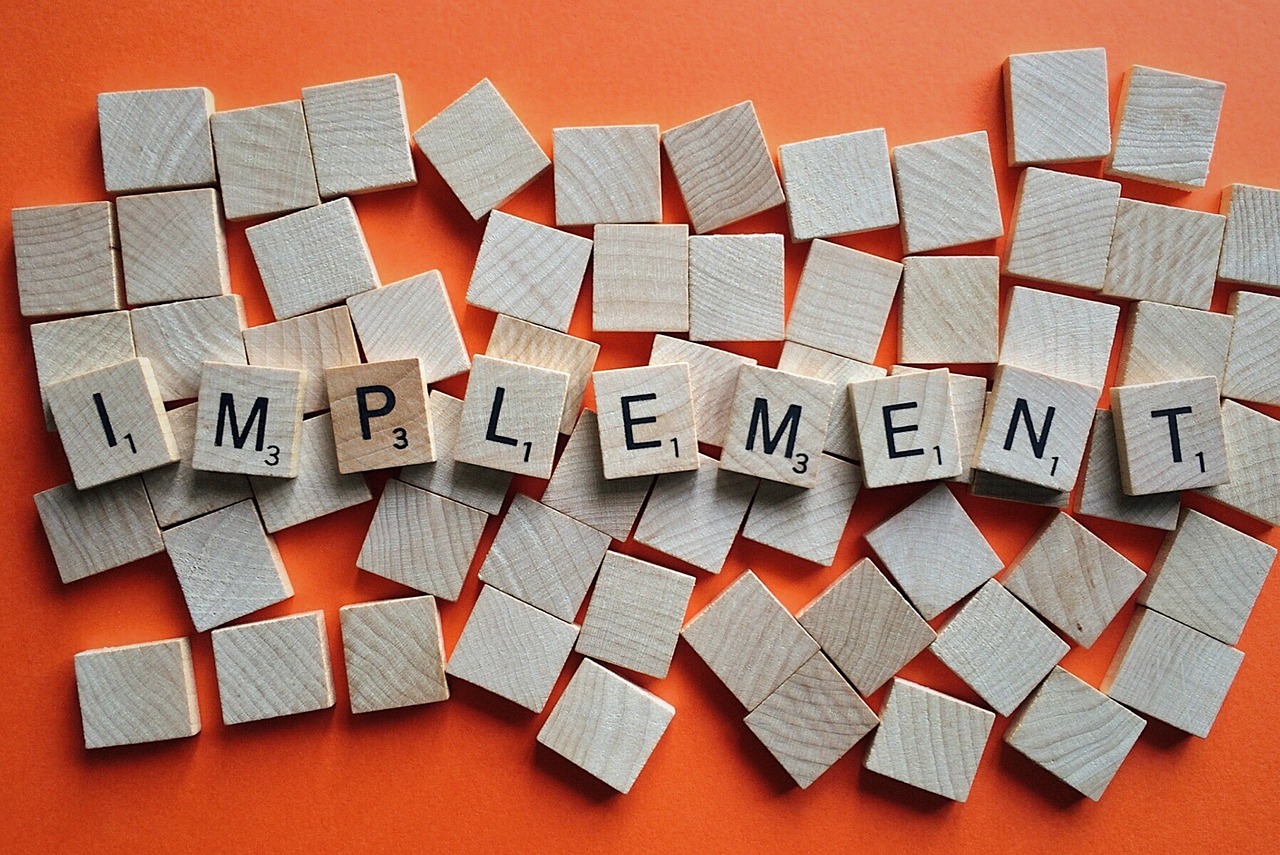How to Use Backtesting to Validate Trading Strategies
In the fast-paced world of trading, the stakes are high, and the pressure to make the right decisions can be overwhelming. This is where backtesting comes into play—a powerful tool that allows traders to test their strategies against historical data before risking real money. Imagine being able to simulate your trading approach in a virtual environment, analyzing how it would have performed in the past. Sounds like a dream, right? Well, it's not just a fantasy; it's a reality that can significantly enhance your trading journey.
Backtesting is not just about running numbers; it's about gaining confidence in your trading strategies. By examining how a strategy would have fared under various market conditions, traders can identify its strengths and weaknesses, paving the way for informed decision-making. This process is akin to a rehearsal for a play—practicing your lines and actions until you feel ready to perform in front of an audience. In the same way, backtesting prepares you for the real market, allowing you to refine your approach and mitigate risks.
However, the effectiveness of backtesting largely hinges on the quality of the historical data used. Just like a painter needs a good canvas to create a masterpiece, traders need accurate and comprehensive data for reliable backtesting results. Without it, even the most promising strategies can crumble. In the following sections, we will explore the intricacies of backtesting, the significance of historical data, and how to avoid common pitfalls, ensuring that you are well-equipped to validate your trading strategies.
Backtesting is a crucial process in trading that involves testing strategies against historical data to evaluate their effectiveness. Essentially, it allows traders to see how a strategy would have performed in the past, providing valuable insights into its potential future performance. This section will delve into what backtesting is and why it's essential for traders.
Imagine you're a chef trying to perfect a new recipe. You wouldn't just throw ingredients together without tasting it first, right? You would want to know how each component interacts and whether the dish is worth serving to guests. Backtesting serves a similar purpose; it allows traders to test their strategies in a controlled environment, ensuring that they are not just throwing darts in the dark.
Historical data serves as the foundation for backtesting. The accuracy and comprehensiveness of this data can significantly influence the reliability of backtesting results and the overall success of trading strategies. Without high-quality data, the entire backtesting process can lead to misleading conclusions.
Different types of historical data can be used for backtesting, including price data, volume data, and economic indicators. Each type offers unique insights that can enhance the robustness of your trading strategies. Here, we will discuss which types are most beneficial for various trading strategies.
Price data is the most critical component for backtesting. It includes the historical prices of assets over a specified period. This data allows traders to analyze price movements, identify trends, and make informed predictions about future price behavior. To source and utilize price data effectively, traders can use various platforms and tools that provide comprehensive historical datasets.
Volume data provides insights into market activity and can enhance backtesting accuracy. By incorporating volume data into your backtesting process, you can gain a better understanding of market dynamics and the strength of price movements. For example, a price increase accompanied by high volume may indicate strong buying interest, while a price increase on low volume might suggest a lack of conviction.
Selecting the right backtesting platform is vital for effective strategy validation. With numerous platforms available, it can be overwhelming to decide which one suits your needs best. Popular platforms often offer features like user-friendly interfaces, extensive historical data, and advanced analytical tools. By reviewing these platforms, traders can make informed decisions that align with their trading goals.
Even experienced traders can make mistakes when backtesting. This section highlights common pitfalls to avoid, ensuring that traders can conduct effective and reliable backtests. Understanding these mistakes can save you time, effort, and money in the long run.
Overfitting occurs when a strategy is too closely tailored to historical data, making it less effective in real-world trading. It's like trying to fit a square peg into a round hole—what works in theory might not work in practice. This subsection discusses the risks of overfitting and how to maintain a balance for realistic results.
Market conditions can change drastically over time. Ignoring these changes during backtesting can lead to unrealistic expectations about a strategy's performance. Here, we will discuss the importance of considering different market environments during backtesting to ensure strategy robustness.
- What is backtesting? Backtesting is the process of testing a trading strategy against historical data to evaluate its effectiveness.
- Why is historical data important? Historical data is crucial because it serves as the foundation for backtesting, influencing the reliability of results.
- How can I avoid common backtesting mistakes? By being aware of pitfalls such as overfitting and ignoring market conditions, you can conduct more effective backtests.
- What types of data should I use for backtesting? Price data and volume data are essential, along with economic indicators depending on your trading strategy.

Understanding Backtesting
Backtesting is a crucial process in the world of trading that allows traders to test their strategies using historical data. Imagine you're a chef experimenting with a new recipe; you wouldn't want to serve it without tasting it first, right? Similarly, backtesting lets traders "taste" their strategies before risking real money. It involves simulating trades based on past market conditions to see how a strategy would have performed. This process is essential because it provides insights into the strategy's potential effectiveness, allowing traders to make informed decisions.
Why is backtesting so important? Well, it helps in identifying the strengths and weaknesses of a trading strategy. If a strategy consistently shows positive results during backtesting, it can boost a trader's confidence in using it in live markets. Conversely, if the strategy performs poorly, it can save traders from making costly mistakes. It's like having a safety net; it catches you before you fall into the abyss of financial loss.
Moreover, backtesting allows traders to refine their strategies. By analyzing the results, they can tweak their approach, adjusting parameters to find the optimal settings. This iterative process is similar to tuning a musical instrument; you make adjustments until it sounds just right. The goal is to create a strategy that not only performs well historically but also has the potential to thrive in future market conditions.
However, it's essential to approach backtesting with a critical mindset. Just because a strategy worked in the past doesn't guarantee it will work in the future. Markets are influenced by a myriad of factors, and conditions can change rapidly. Therefore, while backtesting is a valuable tool, it should be used in conjunction with other methods of analysis to ensure a well-rounded trading strategy.
In summary, backtesting is not just about crunching numbers; it's about understanding the market's behavior and how your strategy interacts with it. It provides a framework for traders to evaluate their strategies, refine their approaches, and ultimately increase their chances of success in the unpredictable world of trading.

Importance of Historical Data
When it comes to backtesting trading strategies, the significance of historical data cannot be overstated. Think of historical data as the backbone of your trading strategy; without it, you're essentially sailing a ship without a compass. This data provides the necessary context and insight into how a strategy might perform under various market conditions. By analyzing past market behavior, traders can identify patterns and trends that can inform their future decisions. But why is this data so critical?
Firstly, accurate historical data allows traders to simulate trades as if they were executed in real-time. This simulation is crucial for understanding how a strategy would have performed in different scenarios. For example, let's say you developed a strategy that works well in a bull market. If you only backtest it during a bear market, you might end up with a false sense of security regarding its effectiveness. Thus, having a comprehensive dataset covering various market conditions is essential for reliable backtesting.
Moreover, the quality of historical data directly impacts the reliability of your backtesting results. Traders often overlook the importance of using clean and accurate data. Inaccurate data can lead to misleading conclusions, which in turn can result in poor trading decisions. Therefore, it’s vital to source historical data from reputable providers to ensure that your backtesting results are as realistic as possible.
In addition to the accuracy of the data, the comprehensiveness of the dataset is equally important. A robust dataset should include a variety of metrics, including:
- Price Data: Historical prices of assets over time.
- Volume Data: The number of shares or contracts traded during a specific time period.
- Economic Indicators: Data points like interest rates, inflation rates, and employment figures that can influence market behavior.
By incorporating these different types of data, traders can gain a multi-dimensional view of the market. This approach enhances the overall effectiveness of backtesting and increases the likelihood of developing a successful trading strategy.
Lastly, it's important to remember that historical data is not just a static resource; it evolves. As new data becomes available, traders must continually refine their strategies and backtesting methodologies. In essence, backtesting is a dynamic process that requires ongoing adjustments based on the latest historical data. So, as you dive into the world of backtesting, remember that the quality and breadth of your historical data will be your guiding light, helping you navigate the often tumultuous waters of trading.

Types of Historical Data
When it comes to backtesting trading strategies, understanding the you can utilize is crucial. Each type offers unique insights that can significantly impact your trading decisions. The three primary categories of historical data include price data, volume data, and economic indicators. Let's dive deeper into each of these types to understand their importance and how they can enhance your backtesting experience.
Price data is the backbone of any backtesting process. It reflects the historical prices of assets over time and is essential for analyzing trends and patterns. Traders often rely on various price data formats, such as open, high, low, and close (OHLC) prices, to develop and refine their strategies. For instance, if you're looking at a stock's performance, you might analyze how it reacted to certain news events or market changes by examining its price movements over different periods.
Next up is volume data, which provides a window into the level of market activity. Volume indicates how many shares or contracts are traded during a specific time frame and can signal the strength of a price movement. High volume often accompanies significant price changes, suggesting strong market interest, while low volume can indicate a lack of conviction. Incorporating volume data into your backtesting can help you identify whether a price move is genuine or if it lacks the necessary support from market participants. For example, a sudden price surge on low volume might be a red flag, indicating a potential reversal.
Lastly, we have economic indicators, which are essential for understanding the broader market context. These indicators, such as GDP growth rates, unemployment figures, and inflation rates, can significantly influence asset prices. By integrating economic data into your backtesting, you can assess how your strategy performs under different economic conditions. For instance, a strategy that works well in a bullish market may falter during a recession. Thus, being aware of the economic backdrop can enhance your strategy's robustness and adaptability.
To sum it up, leveraging a combination of price data, volume data, and economic indicators can provide a more comprehensive view of market behavior. This multifaceted approach not only strengthens your backtesting results but also equips you with the insights necessary to make informed trading decisions. Remember, the goal of backtesting isn't just to validate a strategy but to prepare you for real-world trading scenarios where various factors come into play.

Price Data
When it comes to backtesting trading strategies, is the backbone of the entire process. Imagine trying to build a house without a solid foundation; that’s how crucial price data is in the world of trading. Price data includes historical prices for assets over various time frames, and it provides the necessary context to evaluate how a trading strategy would have performed in the past. Without reliable price data, any backtest is akin to sailing a ship without a compass—you're bound to get lost!
To effectively utilize price data, traders need to consider several factors. First, they should ensure that the data is accurate and comprehensive. Inaccurate data can lead to misleading results, which could ultimately result in financial losses. Therefore, sourcing data from reputable providers is essential. Many traders turn to platforms like Bloomberg, Yahoo Finance, and other specialized data vendors to obtain high-quality price data.
Moreover, the frequency of the price data is another critical aspect. Traders can choose from various time intervals, such as:
- Minute data
- Hourly data
- Daily data
- Weekly data
Each type of frequency has its advantages and disadvantages. For instance, minute data may provide a more granular view of price movements, making it ideal for day traders. On the other hand, weekly or daily data may be more suitable for swing traders who are looking for longer-term trends. Understanding the specific needs of your trading strategy will help in selecting the appropriate frequency of price data.
Additionally, it's essential to consider the adjustments made to price data. For example, stock splits, dividends, and other corporate actions can significantly affect historical prices. Therefore, ensuring that your price data is adjusted for these factors is vital for accurate backtesting. Many data providers offer adjusted price data, which can save traders a lot of time and effort in making manual corrections.
Lastly, once you've gathered your price data, the next step is to organize it effectively. Using spreadsheet software or specialized backtesting platforms can help you track and analyze your data efficiently. This organized approach allows you to quickly identify patterns and trends that can inform your trading decisions.
In summary, price data is not just a collection of numbers; it's a vital tool that can make or break a trading strategy. By ensuring the accuracy, comprehensiveness, and appropriate adjustments of your price data, you set the stage for successful backtesting and ultimately for making informed trading decisions.
Q: What is price data in trading?
A: Price data refers to historical prices of assets over various time frames, providing essential context for evaluating trading strategies during backtesting.
Q: Why is accurate price data important?
A: Accurate price data is crucial because it directly impacts the reliability of backtesting results. Inaccurate data can lead to misleading conclusions and potential financial losses.
Q: How do I source reliable price data?
A: Traders can source reliable price data from reputable providers such as Bloomberg, Yahoo Finance, and specialized data vendors that offer high-quality historical data.
Q: What frequency of price data should I use?
A: The frequency of price data depends on your trading strategy. Day traders might prefer minute data, while swing traders may find daily or weekly data more beneficial.
Q: What adjustments should I make to price data?
A: It's essential to adjust price data for corporate actions like stock splits and dividends to ensure accuracy in backtesting results.

Volume Data
When diving into the world of backtesting, one cannot overlook the significance of . Think of volume data as the heartbeat of the market; it measures the activity level of trading for a specific asset over a given period. Just like how a doctor checks for a pulse to assess health, traders use volume data to gauge the strength or weakness of price movements. If a price increase is accompanied by high volume, it often indicates strong buying interest, suggesting that the trend may continue. Conversely, a price rise on low volume might signal a lack of conviction, hinting that the move could be fleeting.
Utilizing volume data effectively can enhance your backtesting results significantly. For instance, if you're testing a trading strategy that relies on breakout patterns, incorporating volume data can provide insights into whether those breakouts are supported by significant market interest. This is crucial because a breakout without volume is like a party without guests—there's not much going on, and it might not last long.
To effectively incorporate volume data into your backtesting process, consider the following methods:
- Volume Analysis: Look for patterns in volume that correlate with price movements. For example, increasing volume during a price rally can confirm the strength of the trend.
- Volume Indicators: Utilize indicators like the On-Balance Volume (OBV) or the Volume Weighted Average Price (VWAP) to interpret the relationship between price and volume.
- Comparative Volume: Compare current volume to historical averages to assess whether current trading activity is above or below typical levels.
Moreover, incorporating volume data into your backtesting model can help avoid common pitfalls associated with relying solely on price data. For example, a trading strategy that performs well in a low-volume environment might not hold up when the market is buzzing with activity. Therefore, understanding how volume behaves in different market conditions is essential for developing robust trading strategies.
In summary, volume data is not just an ancillary element in backtesting; it is a pivotal factor that can provide deeper insights into market dynamics. By paying attention to how volume interacts with price, traders can validate their strategies more effectively and make informed decisions that align with actual market behavior.
- What is volume data in trading? Volume data refers to the number of shares or contracts traded in a security or market during a given period. It helps traders understand market activity and sentiment.
- How can I access volume data? Volume data can be accessed through most trading platforms, financial news websites, and market data providers. Make sure to choose a reliable source for accurate information.
- Why is volume important in backtesting? Volume is important because it provides context for price movements. High volume often confirms trends, while low volume may indicate weak price movements that are less likely to sustain.

Choosing a Backtesting Platform
When it comes to backtesting, the platform you choose can make a world of difference in the effectiveness of your trading strategies. It's like picking the right tool for a job; the right backtesting platform can simplify your process, enhance your analysis, and ultimately lead to better trading decisions. But with so many options available, how do you know which one is best for you? Let's explore some key factors to consider when making this important choice.
First and foremost, you need to assess the features offered by various platforms. Some platforms provide advanced features like automated backtesting, which allows you to run multiple scenarios simultaneously. Others may offer extensive historical data, customizable indicators, and even integration with live trading. Think about what you need most in your trading journey. If you're a beginner, a user-friendly interface might be more beneficial than complex features that could overwhelm you.
Another critical aspect is the cost. Some backtesting platforms come with hefty price tags, while others may offer free versions with limited features. It's essential to evaluate your budget and determine what you're willing to invest in this tool. Remember, though, that a higher price doesn't always guarantee better performance. Sometimes, you can find a hidden gem that offers excellent functionality at a fraction of the cost.
Next, consider the community and support surrounding the platform. A strong community can be a valuable resource for beginners and experienced traders alike. Look for platforms that have active forums, tutorials, and customer support. This way, if you encounter any issues or have questions, you won’t be left in the dark. It’s like having a friend who’s always there to help when you’re stuck!
Lastly, it’s vital to check the compatibility of the platform with your existing trading tools. If you already use specific software for charting or analysis, ensure that your chosen backtesting platform can integrate seamlessly with those tools. This will save you time and effort, allowing you to focus on refining your trading strategies instead of wrestling with incompatible systems.
To summarize, here are some features to consider when choosing a backtesting platform:
- Features: Look for automated backtesting, historical data access, and customizable indicators.
- Cost: Evaluate your budget and seek value for your investment.
- Community Support: Check for active forums and customer service.
- Compatibility: Ensure it integrates well with your current trading tools.
Ultimately, the right backtesting platform can empower you to validate your trading strategies effectively, giving you the confidence to navigate the markets. So, take your time, do your research, and choose wisely. Your future trading success may very well depend on it!
Q1: What is backtesting?
A1: Backtesting is the process of testing a trading strategy using historical data to evaluate its effectiveness before applying it in real-time trading.
Q2: How do I choose the right backtesting platform?
A2: Consider factors such as features, cost, community support, and compatibility with your existing tools when selecting a backtesting platform.
Q3: Can I backtest any trading strategy?
A3: Yes, most trading strategies can be backtested, but the effectiveness of the results will depend on the quality and relevance of the historical data used.
Q4: What are common mistakes in backtesting?
A4: Common mistakes include overfitting strategies to historical data and ignoring changes in market conditions.

Common Backtesting Mistakes
Backtesting is a powerful tool for traders, helping them validate their strategies against historical data. However, even seasoned traders can stumble into common backtesting mistakes that can skew results and lead to poor decision-making. It's essential to be aware of these pitfalls to ensure that your backtesting process is both effective and reliable. One of the most significant errors is overfitting strategies. This occurs when a trading strategy is excessively tailored to fit historical data, making it less effective in real-world scenarios. Imagine trying to fit a square peg into a round hole; while it might seem to work perfectly in theory, in practice, it just doesn’t hold up. Overfitting can lead to strategies that perform well on past data but fail miserably in live trading.
Another common mistake is ignoring market conditions. The market is not static; it changes over time due to various factors such as economic indicators, geopolitical events, and changes in market sentiment. Failing to account for these shifts can result in strategies that are out of touch with the current market environment. For instance, a strategy that worked well during a bull market may not perform the same way during a bear market. To mitigate this risk, it's crucial to analyze different market conditions during your backtesting process. This means not only looking at the data but also considering the context in which it occurred. By doing so, you can build a more robust strategy that can withstand the test of time.
Additionally, many traders make the mistake of using insufficient data for backtesting. Relying on a small dataset can lead to misleading results. It’s like trying to predict the weather for an entire year based on just a few days of data; it simply doesn’t provide a complete picture. To avoid this, ensure that you are using a comprehensive dataset that covers various market cycles and conditions. The more data you have, the better your chances of developing a strategy that is not only effective but also resilient.
Moreover, failing to account for transaction costs is another critical oversight. Many traders get so caught up in the theoretical performance of their strategies that they forget about the real-world costs associated with trading, such as commissions, slippage, and spreads. These costs can eat into profits and significantly alter the performance of a strategy. Therefore, when backtesting, it’s essential to include these factors in your calculations. This way, you’ll have a more accurate representation of how your strategy will perform in a live trading environment.
Lastly, neglecting to update and optimize strategies can lead to stagnation. The market is a dynamic entity, and what works today may not work tomorrow. Regularly revisiting and refining your strategies based on new data and changing market conditions is crucial. Think of it as maintaining a car; if you don’t regularly check the oil or replace worn-out tires, you’re setting yourself up for failure. By continuously optimizing your strategies, you can adapt to new challenges and opportunities in the market.
In summary, avoiding these common backtesting mistakes can significantly enhance your trading strategy's effectiveness. Keep an eye out for overfitting, consider market conditions, use sufficient data, account for transaction costs, and regularly optimize your strategies. By doing so, you can ensure that your backtesting process is a valuable tool in your trading arsenal.
- What is backtesting? Backtesting is the process of testing a trading strategy using historical data to evaluate its potential effectiveness.
- Why is historical data important in backtesting? Historical data provides the foundation for testing strategies, allowing traders to see how they would have performed in the past.
- What are some common mistakes in backtesting? Common mistakes include overfitting, ignoring market conditions, using insufficient data, neglecting transaction costs, and failing to optimize strategies.
- How can I avoid overfitting my strategy? To avoid overfitting, ensure that your strategy is flexible and can adapt to different market conditions without being overly tailored to past data.

Overfitting Strategies
When it comes to backtesting trading strategies, one of the most common pitfalls traders face is overfitting. This occurs when a strategy is too finely tuned to historical data, making it perform exceptionally well in past conditions but fail miserably in real-time trading scenarios. Think of it like a student who memorizes answers for a specific test; they might ace that exam, but when faced with a different set of questions, their knowledge crumbles. Overfitting can create a false sense of security, leading traders to believe their strategies are robust when, in reality, they are just a perfect match for past data.
To avoid the trap of overfitting, traders should aim for a balance between complexity and simplicity. A strategy that is overly complex may capture noise in the data rather than the underlying trend, while a too-simple strategy might miss out on valuable signals. Here are some key points to consider:
- Keep it Simple: A straightforward strategy is often more adaptable to changing market conditions.
- Use Out-of-Sample Testing: Split your data into training and testing sets to evaluate your strategy on unseen data.
- Avoid Excessive Parameters: Limit the number of variables you adjust during backtesting to reduce the risk of overfitting.
Moreover, it’s essential to incorporate robustness checks in your backtesting process. This means testing your strategy under various market conditions and time frames to gauge its performance across different scenarios. For instance, a strategy that works well in a trending market may not perform as effectively during sideways market conditions. By exposing your strategy to a broader range of historical data, you can better understand its potential weaknesses.
Another effective method to combat overfitting is to utilize walk-forward analysis. This technique involves continuously optimizing and testing a strategy over different time intervals. Instead of fitting the model to the entire dataset, you fit it to a segment and then test it on the subsequent segment. This not only helps in validating the strategy but also in adapting it to changing market dynamics.
In conclusion, while backtesting is a powerful tool for validating trading strategies, it is crucial to remain vigilant against the dangers of overfitting. By maintaining a balanced approach, simplifying your strategies, and rigorously testing them under various conditions, you can develop a more reliable and resilient trading plan that stands the test of time.
- What is overfitting in trading? Overfitting occurs when a trading strategy is excessively tailored to historical data, resulting in poor performance in live trading conditions.
- How can I avoid overfitting? To avoid overfitting, keep your strategy simple, use out-of-sample testing, and limit the number of parameters you adjust during backtesting.
- What is walk-forward analysis? Walk-forward analysis is a method of continuously optimizing and testing a trading strategy over different time intervals to ensure its robustness.

Ignoring Market Conditions
When it comes to backtesting trading strategies, one of the most significant mistakes traders make is . Just like a chef wouldn’t bake a cake without considering the temperature of the oven, a trader shouldn't test their strategies without factoring in the environment in which they were developed. Market conditions can fluctuate wildly, influenced by a myriad of factors including economic data releases, geopolitical events, and changes in trader sentiment. If you don’t take these elements into account during your backtesting process, you might end up with a strategy that looks great on paper but fails miserably in real-world trading.
For instance, consider a trading strategy designed to capitalize on a bull market. If you backtest this strategy using data from a bear market, the results could be misleading. A strategy that performs well in one type of market might completely crumble in another. Therefore, it’s crucial to assess different market conditions during your backtesting process to ensure that your strategies are robust and adaptable.
To illustrate this point, let’s break down some of the key market conditions that traders should consider:
- Volatility: High volatility can create opportunities for profit but also increases risk. Strategies that work well in stable markets may not perform as expected during volatile periods.
- Trends: Identifying whether the market is trending or ranging is essential. A strategy that thrives in a trending market might fail when the market is stagnant.
- Economic Indicators: Major economic announcements can dramatically affect market conditions. Backtesting without considering these indicators can lead to unrealistic expectations.
Additionally, it’s important to remember that past performance is not always indicative of future results. Just because a strategy worked well during a certain period doesn’t guarantee it will continue to do so. The market is constantly evolving, and what was once a winning strategy may become obsolete as conditions change.
To mitigate the risk of ignoring market conditions, traders can implement a few best practices:
- Conduct backtests across multiple time frames to see how strategies perform under different conditions.
- Incorporate stress testing to evaluate how strategies hold up during extreme market events.
- Continuously monitor market conditions and adjust strategies accordingly.
In conclusion, acknowledging and analyzing market conditions is a vital component of the backtesting process. By doing so, traders can develop strategies that are not only effective but also resilient in the face of changing market dynamics. Remember, a well-rounded approach to backtesting can make the difference between a successful trading career and one filled with frustration and losses.
Q1: What is backtesting?
Backtesting is the process of testing a trading strategy on historical data to see how it would have performed in the past.
Q2: Why is historical data important for backtesting?
Historical data is crucial because it provides the foundation upon which you can evaluate the effectiveness of your trading strategies.
Q3: What are some common mistakes in backtesting?
Some common mistakes include overfitting strategies to historical data and ignoring market conditions that can affect performance.
Q4: How can I choose the right backtesting platform?
Look for platforms that offer comprehensive features such as user-friendly interfaces, extensive historical data, and analytical tools to enhance your backtesting process.
Frequently Asked Questions
- What is backtesting in trading?
Backtesting is the process of testing a trading strategy using historical data to see how it would have performed in the past. This allows traders to evaluate the effectiveness of their strategies before risking real money in the market.
- Why is historical data important for backtesting?
Historical data is crucial because it provides the foundation for testing trading strategies. Accurate and comprehensive data can significantly influence the reliability of backtesting results, which in turn affects the overall success of a trading strategy.
- What types of historical data should I use for backtesting?
Common types of historical data include price data, volume data, and economic indicators. Each type can provide different insights and can be beneficial depending on the trading strategy being tested.
- How do I source price data for backtesting?
You can source price data from various platforms, including trading software, financial websites, and data providers. It's essential to ensure that the data is accurate and covers the time period you want to analyze.
- What are some popular backtesting platforms?
Popular backtesting platforms include MetaTrader, TradingView, and Amibroker. Each platform has its features and tools, so it's important to choose one that meets your specific needs for strategy validation.
- What are common mistakes to avoid when backtesting?
Common mistakes include overfitting strategies to historical data and ignoring changing market conditions. Both can lead to unrealistic expectations and poor performance in live trading scenarios.
- What is overfitting, and why is it a problem?
Overfitting occurs when a trading strategy is too closely tailored to historical data, making it less effective in real market conditions. This can result in strategies that perform well in backtests but fail in live trading.
- How can I ensure my backtesting results are reliable?
To ensure reliable backtesting results, use high-quality historical data, avoid overfitting, and consider different market conditions. Regularly updating your strategies based on new data and market changes is also essential.



















